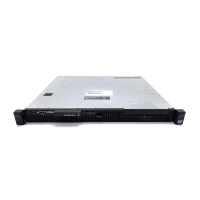Virtual Routing and Forwarding (VRF) | 1115
Load the VRF CAM Profile
On an E-series Terascale platform, select the IPv4 or IPv6 CAM profile used to support VRF and reload
the system to activate the profile.
On an E-series Exascale platform, configure the CAM size used to support VRF. Then enable VRF
microcode for use with the CAM profile and reload the system to activate the profile. You can set the CAM
size to 40M (default) which supports both IPv4 and IPv6 or 10M which supports only IPv4.
Enable VRF
VRF is enabled by default when VRF microcode is loaded on an E-Series ExaScale or TeraScale router.
On an E-Series router, Dell Force10 VRF supports up to 15 VRF instances: 1 to 14 and the default VRF
(0).
A VRF name is not exchanged between routers. VRF IDs are local to a router. The following features and
functionality are supported only on the default VRF (0) instance:
• ISIS
• BGP
• RIP
• IPv6
• Multicast
• Static ARP
Step Task Command Syntax Command Mode
1 Select the appropriate CAM
profile for your system.
cam-profile [ipv4-vrf microcode ipv4-vrf |
ipv4-v6-vrf microcode ipv4-v6-vrf
] default-vrf
| vrf-name
CONFIGURATION
2 Reload the system to implement
the new CAM profile.
reload
EXEC
Step Task Command Syntax Command Mode
1 Configure the CAM size (10M or
40M) to be used by your system.
cam-profile name [10M-cam]
Default: 40M
CONFIGURATION
2 Select and enable VRF microcode
for use with the VRF CAM
profile.
microcode vrf
enable
CAM-PROFILE
3 Reload the system to activate the
new CAM profile.
reload
EXEC

